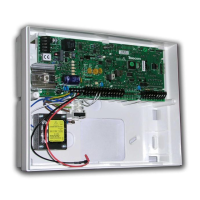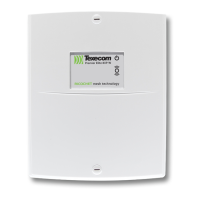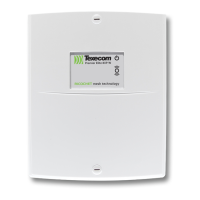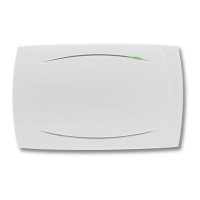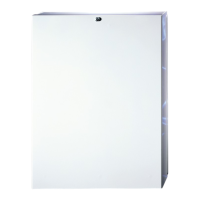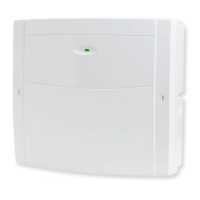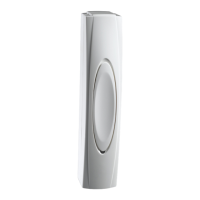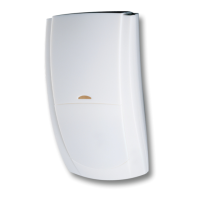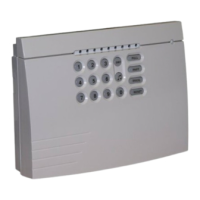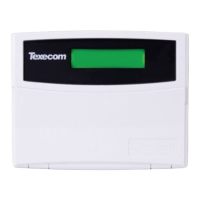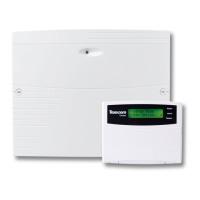Do you have a question about the Texecom PREMIER 640 and is the answer not in the manual?
Explains the basic components of the alarm system: control panel, keypads, detectors, and sensors.
Details the function and types of keypads, including display windows and LED indicators.
Describes system messages indicating the need for reset or service, and how to access them.
Lists and explains various fault messages displayed by the system, along with their causes.
Explains issues encountered when attempting to arm the system with active zones.
Outlines the system's operation divided into Arming and User menus.
Provides step-by-step instructions for fully arming the alarm system.
Guides users on how to part arm the system, omitting specific zones.
Explains how to arm specific areas within the system independently.
Details the procedure for disarming the system, covering entry and non-entry scenarios.
Instructs on how to cancel the exit mode if the user decides not to leave the premises.
Explains how to resolve an 'Arm Fail' condition where the system cannot arm.
Provides steps to silence the alarm sounders after an activation.
Guides users on resetting the system after an alarm has been silenced.
Details the procedure for an engineer to reset the system after an alarm.
Explains how to reset the system using an anti-code following an alarm.
Instructs on how to exclude specific zones from arming when the system is active.
Guides on activating and deactivating the chime feature for zones.
Explains how to check the status of individual zones within the system.
Details how to exclude 24-hour zones when the system is disarmed.
Guides on selecting specific areas for the chime feature.
Explains how to view faults related to zone activity not being triggered.
Guides on viewing activation counts for zones with the 'Activity' attribute.
Details how to send SMS text messages from the keypad.
Provides instructions for users to change their own security codes.
Guides on configuring which zones trigger the chime feature.
Explains how to test system outputs like sounders and strobes.
Details the procedure for performing a walk test of all system zones.
Instructs on how to grant temporary access to engineers for programming.
Guides on setting the real-time clock for event logging.
Guides on setting the system date for accurate event logging.
Explains how to manually turn control timers on or off.
Details how to program the ON/OFF times and days for control timers.
Covers the process of adding new users and their associated details.
Describes different user roles and their permissions within the system.
Presents a table detailing options available for each user type.
Defines specific options available to users when their code is entered.
Defines additional options available to users, often for custom types.
Allows configuration of menu options accessible by custom user types.
Guides on assigning names to users for easier identification.
Details the process of assigning new user codes and areas.
Explains how to program proximity tags for user access.
Provides steps for deleting user codes from the system.
Guides on configuring 'Part Arm' settings, omitting zones for access.
Details how to initiate a call to a remote uploading/downloading computer.
Explains how to set holiday dates to affect control timer operations.
Guides on adjusting the volume levels for system speakers.
Explains how to print the system's event log if a printer is connected.
Guides on programming mobile numbers for SMS text message alerts.
Lists the European directives and standards the product conforms to.
Outlines the warranty period and terms for the control panel and accessories.
Provides fields to record details about system areas and their timing parameters.
Provides fields to record details about installed keypads and their locations.
Provides fields to record details about each zone, including type, description, and area assignment.
Provides fields to record details for each user, including code, type, and area access.
Fields for recording installer, company, address, and telephone details.
Table to log dates, comments, and engineers for service visits.
Fields for recording emergency call-out and anti-code reset numbers.
Details to record the model and location of the control panel.
| Brand | Texecom |
|---|---|
| Model | PREMIER 640 |
| Category | Security System |
| Language | English |
